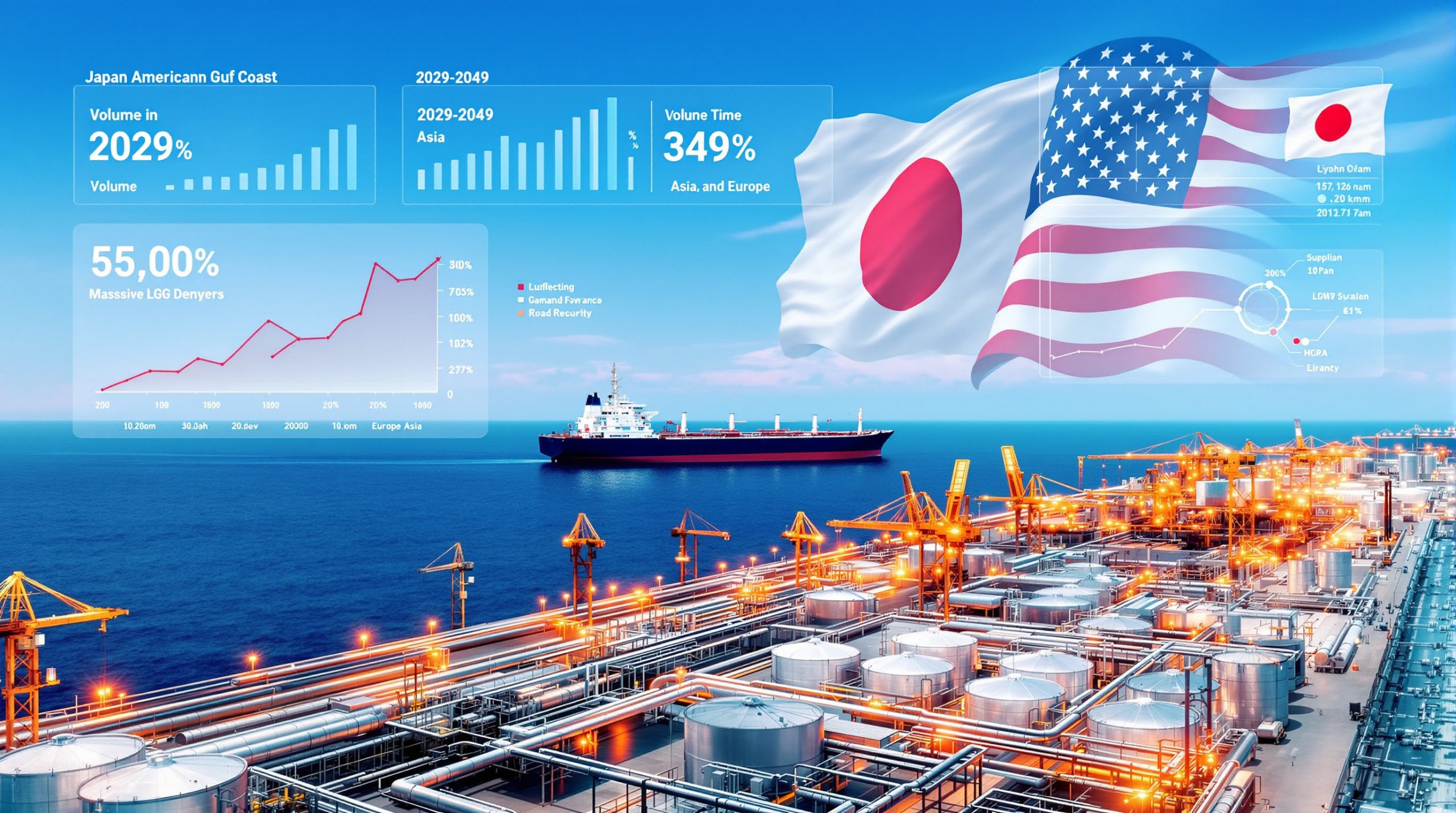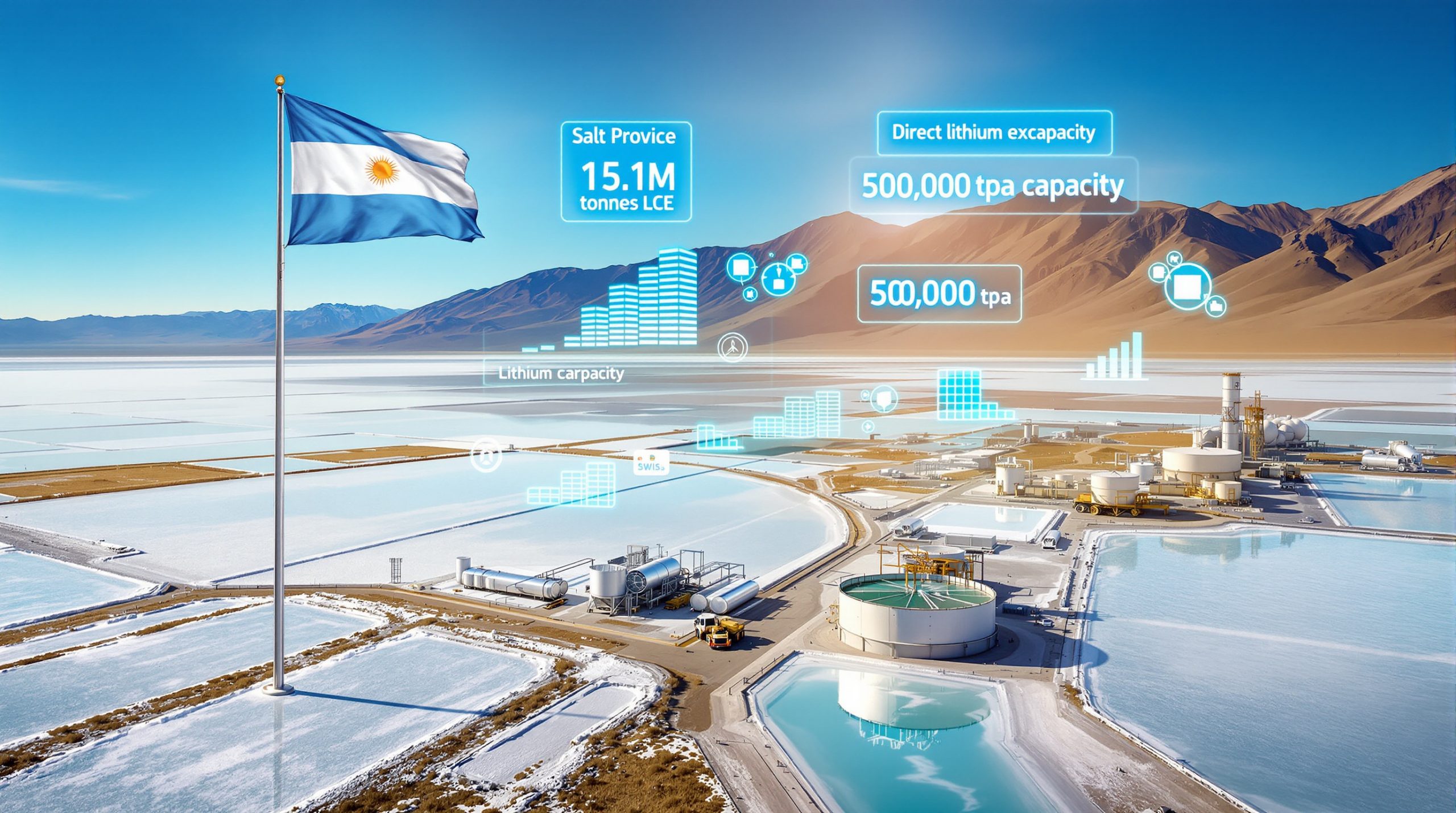Understanding China's Stranglehold on Global Rare Earth Supply
China's dominance over rare earth elements creates an unprecedented vulnerability in global supply chains that extends far beyond the relatively modest $6 billion market size. The risk of disruption in supply of rare earths has become a critical concern as the nation controls 69% of worldwide mining operations, 92% of refining capacity, and a staggering 98% of permanent magnet production, according to Goldman Sachs analysis from October 2025.
This concentration represents one of the most significant single points of failure in modern industrial infrastructure. Furthermore, the rare earth reserves distribution globally shows heavy concentration in geologically limited regions, making supply diversification extremely challenging.
The economic implications of this dominance become clear when considering potential disruption scenarios. Goldman Sachs warns that even a 10% disruption in industries reliant on rare earth elements could trigger $150 billion in lost economic output, alongside inflationary pressures cascading through multiple sectors. Despite rare earth markets being 33 times smaller than copper markets, their strategic importance creates disproportionate systemic risk.
Recent policy developments have heightened these concerns. China expanded export restrictions on October 9, 2025, adding five new elements to its controlled list and implementing enhanced scrutiny specifically targeting semiconductor applications. This timing coincides with broader geopolitical tensions and expected high-level diplomatic discussions between world leaders.
Economic Impact Projections by Disruption Level
| Disruption Severity | Estimated Global Losses | Primary Affected Industries | Recovery Timeline |
|---|---|---|---|
| 10% supply reduction | $150 billion | Electronics, automotive | 6-12 months |
| 25% supply reduction | $375 billion* | Renewable energy, telecommunications | 12-24 months |
| 50% supply reduction | $750 billion* | All technology sectors | 24+ months |
*Projected estimates based on Goldman Sachs 10% baseline analysis
Critical Elements Facing Maximum Exposure
Goldman Sachs identifies several rare earth elements as particularly vulnerable to supply disruption, each carrying unique strategic implications for global industries. Moreover, the critical minerals energy transition has significantly increased demand for these strategic materials.
Samarium emerges as especially critical due to its irreplaceable role in heat-resistant samarium-cobalt magnets. These specialised magnets are essential for aerospace applications and defence systems operating in extreme temperature environments. The element's unique magnetic properties at high temperatures make substitution extremely challenging, creating absolute dependency scenarios for critical defence applications.
Lutetium and Terbium face significant risk of disruption in supply of rare earths controls due to their widespread industrial applications. These elements support advanced electronics manufacturing and specialised equipment across multiple sectors. Goldman Sachs emphasises that supply interruptions for these widely-used elements pose substantial GDP loss risks, as they cascade through interconnected supply networks.
Light rare earth elements, including cerium and lanthanum, represent potential future targets for export restrictions. While these elements are more geologically abundant than their heavy counterparts, China's dominance in both mining and refining operations creates processing bottlenecks that could severely impact global availability.
The geographic concentration challenge becomes particularly acute for heavy rare earth elements, which remain scarce outside China and Myanmar. Most alternative deposits identified globally are characterised as small-scale, lower-grade, or containing radioactive materials that significantly complicate extraction processes and increase environmental management costs.
Elements Under Enhanced Export Scrutiny
- Samarium: Critical for aerospace and defence applications requiring high-temperature magnetic performance
- Lutetium: Essential for advanced electronics and specialised industrial equipment
- Terbium: Key component in phosphors and magnetic alloys across multiple industries
- Cerium: Primary component in catalytic converters and glass polishing compounds
- Lanthanum: Critical for battery electrodes and optical applications
Export Control Mechanisms Creating Market Instability
The October 2025 expansion of China's rare earth export controls introduces sophisticated restriction mechanisms that extend beyond simple volume quotas. These new measures implement enhanced licensing requirements specifically targeting semiconductor users, creating immediate uncertainty for technology manufacturers dependent on stable rare earth supplies.
Goldman Sachs analysts characterise these restrictions as occurring within a broader context of rising geopolitical tensions affecting multiple critical commodities. Beyond rare earths, the bank warns that cobalt, oil, and natural gas face similar supply disruption risks driven by international political dynamics rather than market fundamentals.
The timing of these export control expansions, coinciding with expected diplomatic engagement between major world leaders, underscores how rare earth supply access has become intertwined with broader strategic relationships. This politicisation of commodity markets represents a fundamental shift from traditional commercial trading patterns.
Consequently, the risk of disruption in supply of rare earths has evolved from a primarily commercial concern to a strategic security issue. The mining industry evolution now incorporates geopolitical risk assessment as a central component of operational planning.
Restriction Mechanisms and Their Market Effects:
- Enhanced licensing procedures requiring detailed end-user verification and application review periods
- Volume limitations forcing manufacturers to reduce production or seek alternative materials
- Sector-specific scrutiny creating particular challenges for semiconductor and defence applications
- Administrative compliance costs increasing operational overhead for international buyers
The cascading effects extend through entire manufacturing ecosystems, forcing companies to redesign products, restructure supplier relationships, and absorb significant cost increases that ultimately impact consumer prices and industrial competitiveness.
Structural Barriers Preventing Supply Chain Independence
Building independent rare earth supply chains confronts multiple interconnected obstacles that extend far beyond simple capital investment. Goldman Sachs identifies geological scarcity, technological complexity, and environmental challenges as primary barriers preventing rapid diversification away from Chinese sources.
Development Timeline Realities:
- New mine development: 8-10 years from discovery to commercial production
- Refining facility construction: 5 years requiring advanced expertise and infrastructure
- Magnet manufacturing capability: Additional years for technology transfer and skilled workforce development
The geological constraints prove particularly challenging for heavy rare earth elements, which remain concentrated in China and Myanmar. Alternative deposits outside these regions typically present as smaller-scale operations with lower-grade ores or radioactive content requiring specialised handling procedures.
Refining rare earth elements demands sophisticated expertise and infrastructure that cannot be quickly replicated. Goldman Sachs emphasises that this processing capability represents a significant bottleneck beyond simply securing raw materials. The complexity of rare earth separation and purification requires years of technical development and substantial capital investment.
Even as magnet production capacity expands in the United States, Japan, and Germany, these operations face fundamental constraints due to China's continued control over critical inputs such as samarium. This creates a situation where downstream manufacturing may relocate, but upstream dependency persists, limiting true supply chain independence.
Environmental and Regulatory Complications:
- Radioactive waste management requirements for many rare earth deposits outside China
- Groundwater contamination risks creating community opposition and regulatory delays
- Extended permitting processes in jurisdictions with strict environmental standards
- Technology transfer limitations restricting access to advanced processing methods
Western rare earth projects often encounter community resistance and extended environmental review periods that Chinese operations historically avoided, creating competitive disadvantages for alternative suppliers attempting to enter the market. However, mine reclamation innovation is helping address some environmental concerns.
Emerging Players in Supply Diversification Efforts
Despite structural challenges, several companies and regions show promise for reducing global dependence on Chinese rare earth supplies, though Goldman Sachs cautions that the risk of disruption in supply of rare earths remains substantial across the entire supply chain.
Goldman Sachs identifies key Western producers positioned to potentially ease shortages, including Lynas Rare Earths, Solvay, Iluka Resources, and MP Materials Corp. However, the bank emphasises that these alternative suppliers cannot immediately replace Chinese capacity and face their own operational constraints.
Promising Alternative Suppliers:
- Lynas Rare Earths: Operating integrated mine-to-oxide production with established market presence
- MP Materials Corp: Developing domestic U.S. processing capabilities for strategic independence
- Iluka Resources: Leveraging mineral sands expertise for rare earth element extraction
- Solvay: Providing specialised processing and chemical expertise for value-added products
Regional development initiatives are emerging across multiple continents, though implementation timelines extend over decades rather than years. North American efforts focus on eliminating Chinese-origin materials from defence supply chains, whilst European initiatives target increased domestic processing capacity for critical materials.
Australia presents particular promise given its existing mining expertise and geological resources. The nation's established mining infrastructure and regulatory framework provide advantages for expanding rare earth production beyond current light rare earth operations.
Key Investment Considerations:
Goldman Sachs suggests equity positions in rare earth companies as a method for investors to manage disruption exposure, specifically highlighting the companies mentioned above as potential beneficiaries of supply chain disruptions. However, the bank cautions that investment success depends on successful execution of complex development projects over extended timeframes.
The emergence of financial instruments for hedging rare earth price volatility represents another development in risk management, though liquidity remains limited compared to traditional metals markets. This constraint reflects the relatively small market size and concentrated supply structure that characterises rare earth trading.
How Can Industries Mitigate Supply Chain Risks?
Industries dependent on rare earth elements are implementing comprehensive risk management approaches that extend beyond traditional procurement strategies. These efforts focus on reducing dependency, extending supply security, and developing alternative approaches to critical applications.
Inventory Management Evolution:
Companies are fundamentally restructuring their approach to rare earth inventory management, extending safety stock levels from traditional 30-90 day supplies to 6-12 month reserves despite increased carrying costs. This strategic shift reflects recognition that supply disruptions may persist longer than typical commodity market corrections.
Product Engineering Adaptations:
- Material substitution research developing alternatives with acceptable performance trade-offs
- Design optimisation reducing rare earth content whilst maintaining product specifications
- Application-specific engineering customising solutions for different performance requirements
- Recycling integration incorporating secondary materials to reduce primary supply dependency
Supply Agreement Restructuring:
Organisations are diversifying supplier relationships across multiple geographic regions and developing long-term contractual arrangements that provide greater supply security. These agreements often include provisions for priority allocation during shortage periods and shared investment in capacity expansion projects.
Goldman Sachs recommends equity positions in key rare earth companies as an investment strategy for managing disruption risks. This approach allows investors to benefit from potential price appreciation whilst gaining indirect exposure to supply chain developments.
Financial Risk Management Tools:
While emerging, financial instruments for hedging rare earth price volatility provide limited but growing options for large industrial users. These instruments remain less liquid than traditional commodity hedges, reflecting the specialised nature and concentrated supply structure of rare earth markets.
In addition, the US mineral production policy provides strategic framework for domestic supply chain development, offering additional hedging opportunities for American companies.
Future Outlook for Rare Earth Supply Security
Goldman Sachs forecasts a deficit in supplies of neodymium-praseodymium oxide (NdPrO), critical materials for permanent magnet production. This shortage projection reflects growing demand from electric vehicle production and renewable energy infrastructure development outpacing supply development efforts.
The rare earth market is becoming increasingly politicised, with supply access tied directly to broader diplomatic relationships and international trade negotiations. This trend suggests continued volatility driven by geopolitical factors rather than purely commercial considerations, fundamentally altering traditional market dynamics.
Demand Growth Drivers:
- Electric vehicle expansion requiring high-performance permanent magnets
- Wind energy infrastructure demanding large quantities of rare earth magnets
- Artificial intelligence hardware consuming specialised rare earth elements
- 5G telecommunications equipment incorporating multiple rare earth components
- Advanced defence systems requiring temperature-resistant magnetic materials
Supply Development Challenges:
The timeline for achieving meaningful supply chain independence extends 10-15 years under optimal conditions, assuming favourable regulatory environments and sustained investment commitments. This lengthy development period creates ongoing vulnerability to political and economic disruptions affecting Chinese supply sources.
Market Evolution Trends:
The rare earth sector is transitioning from a predominantly commercial market toward a strategically managed resource system where access depends on international relationships and security considerations. This evolution requires companies and investors to incorporate geopolitical analysis into traditional commodity market assessments.
Long-term Strategic Implications:
Future rare earth supply security will likely depend on successful diversification efforts across multiple regions and development of robust recycling systems to reduce primary material dependency. However, the concentrated nature of rare earth geology and processing complexity suggests that some level of supply concentration will persist regardless of diversification efforts.
How quickly could alternative suppliers replace Chinese rare earth capacity?
Complete supply chain independence would require 10-15 years of sustained investment under favourable conditions, with heavy rare earth elements presenting the most significant challenges for replacement.
Are there effective substitutes for rare earth elements in critical applications?
Limited substitutes exist for most rare earth applications, with alternatives typically involving significant performance compromises or substantially higher costs that affect product competitiveness.
Which sectors face the greatest vulnerability to rare earth supply disruptions?
Electronics manufacturing, electric vehicle production, renewable energy systems, and defence equipment manufacturing face maximum exposure due to limited substitution options and critical performance requirements.
What role do recycling and secondary materials play in supply security?
Recycling provides supplemental supply but cannot replace primary production due to material losses in use and processing, though it offers valuable supply chain diversification for certain applications.
Disclaimer: This analysis contains forward-looking projections and market assessments that involve inherent uncertainty. Readers should conduct independent research and consult qualified professionals before making investment or business decisions based on rare earth supply considerations. Geopolitical developments and technological changes may significantly impact future market conditions.
Looking to Capitalise on Supply Chain Disruption Opportunities?
Discovery Alert's proprietary Discovery IQ model delivers real-time alerts on significant mineral discoveries, including critical materials like rare earths, instantly empowering subscribers to identify actionable opportunities ahead of the broader market. Understand why historic discoveries can generate substantial returns by exploring major mineral breakthroughs, then begin your 30-day free trial today to position yourself ahead of supply chain developments.




